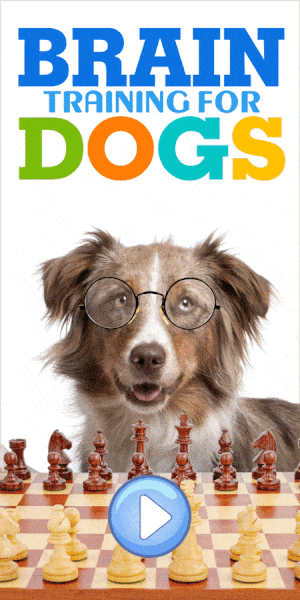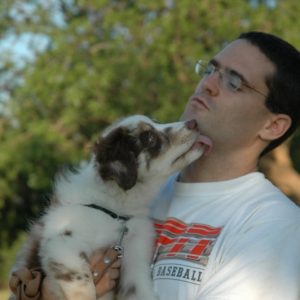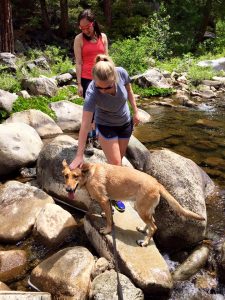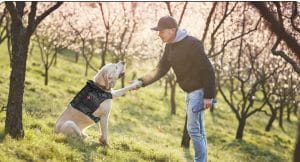Important cues
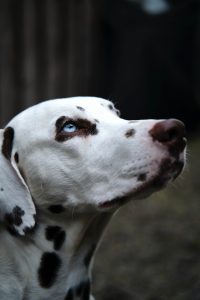
In addition, it is very important that the dog knows the ‘leave it‘ cue. In a hospital environment, a dog is likely to find things on the floor that can really hurt him (such as pills, medicine, etc) so you want to make sure your dog’s ‘leave it’ cue is solid.
The next thing you should do, is train your dog to touch and accept objects that he/she may encounter during therapy work. For example, teaching the dog names of objects and teaching him/her to touch them with his/her nose is a good start. Teach your dog to touch crutches, wheelchairs, canes, walkers, hospital beds, etc.
Socialization
Perhaps the most important aspect of therapy dogs is proper socialization. Socialization refers to a process by which the dog learns to accept and trust various objects, sounds, people, dogs, cats, other animals, etc. Socialization is usually mentioned in relation to puppy training. During a sensitive period called the socialization period or stage, the puppy needs to be exposed to as many stimuli and have pleasurable experiences during those exposures. This will ensure trust, and lack of fear later in life. In my online book “The Puppy Well-Being Training System” you can find a detailed section about socialization.
In addition to regular socialization, therapy dogs need a more specific type of socialization. Therapy dogs need to learn to be around hospital noises, hospital equipment, various types of people with different gaits, unusual gaits, limping, impaired speech, etc. This can be accomplished in the same manner we teach our dogs to accept anything. We use classical conditioning to associate between the stimulus (for example: a person with a limp) to a reward (for example – food).
Appendix B in the Puppy Well Being Training System Manual provides a socialization table that can assist you in keeping track of the socialization process and making sure you follow it correctly. Although the ages in the table relate to puppies, you can easily change the ages and use it for your older dog training.
Accepting Human Handling
In direct continuation to socialization comes handling. A therapy dog must learn to accept various types of human handling – A dog should stand or sit calmly while he/she is being handled in her mouth, ears, legs, nails, tail, etc. Basically, a therapy dog should be able to tolerate anything the groomer will do or that a vet will do during a check-up. Teaching a dog to accept handling is done by classical conditioning. We associate human touch and handling with good things. The Puppy Well Being Training System manual has a detailed handling section and you would be wise to read it.
Watch a video that demonstrates the handling process
Tricks
Dog tricks can be a great way to break the ice and to put a smile on someone’s face. Tricks are very welcomed but it is important to train tricks that do not require the dog to touch a patient. Many people you will work with can be injured very easily from the dog’s paw, nail, or muzzle. Concentrate on teaching tricks that the dog does on its own.
Using clicker training is probably the best way to teach many tricks to a dog. When it comes to tricks, the sky is the limit and it is only your imagination that limits the number of tricks you can teach your dog.
If you have any ideas for tricks, please email me and I will post them in a new therapy dog tricks section.

